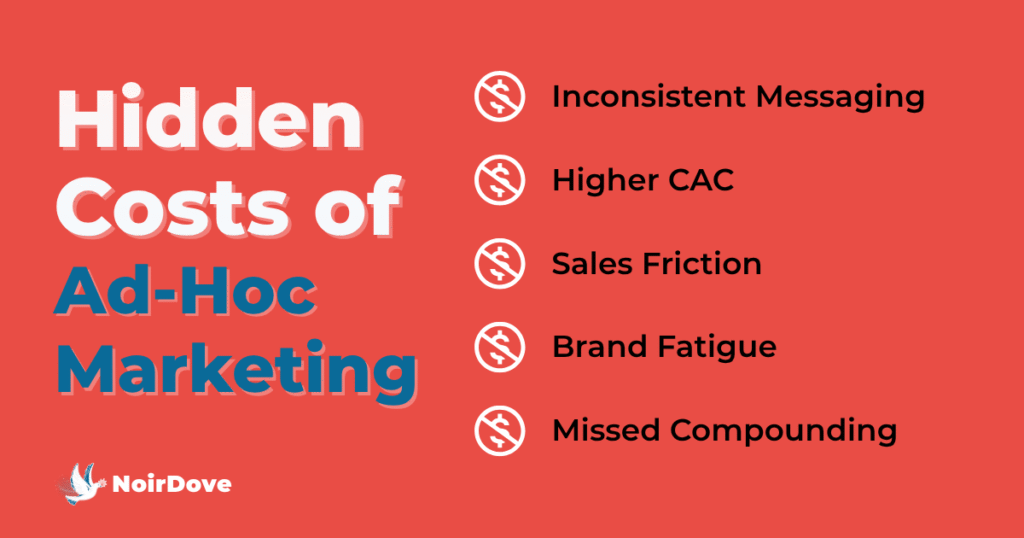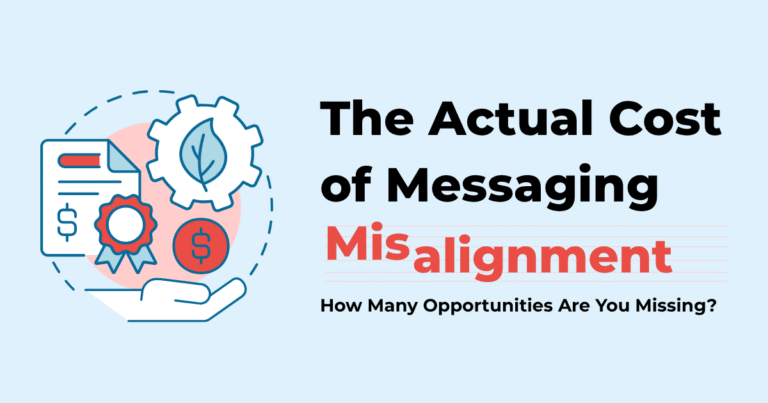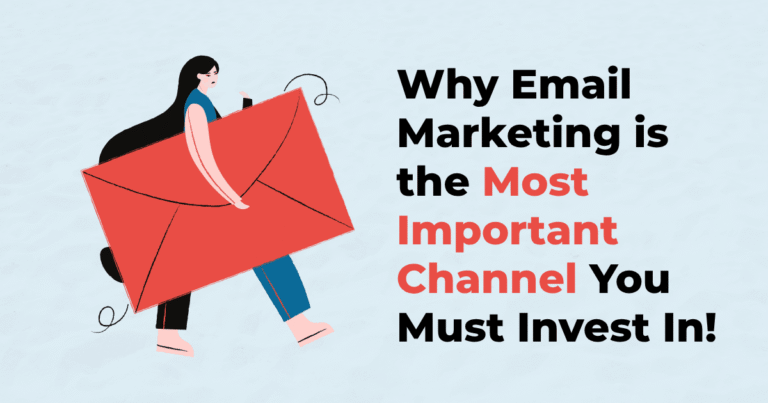Key Takeaways
- Ad-hoc marketing can provide visibility, but it kills trust and predictability.
- Founders commonly mistake urgency for progress during the early stages of GTM.
- Short-term wins create long-term damage to brand consistency.
- Strategic, Compounded Marketing turns effort into leverage.
- When marketing stops chasing sales and starts to shape demand, long-term growth begins.
The Founder’s Trap: Why Short-Term Marketing Feels Right but Fails Hard
When startups are early and resources are thin, founders often default to short-term marketing: quick ads, one-time campaigns, or bursts of activity to drive immediate leads.
It feels productive. It gets clicks, maybe even a few deals. But over time, it slowly suffocates growth.
Short-term marketing creates a dangerous illusion: activity equals momentum.
But activity without direction burns cash and confuses your market.
A recent report from HubSpot on 2024 marketing trends indicates that 72% of startups spend more than half of their budget on short-term campaigns that do not connect very well with the long-term strategy. Only 14% state their marketing efforts contribute directly to sustainable revenue growth.
Short-term marketing doesn’t just waste money; it breaks trust, confuses messaging, and trains your audience to ignore you.
When Founders Realize It’s a Problem
Founders rarely notice when short-term marketing is hurting their sales engine. It usually becomes clear at certain growth stages:
Stage 1: $0–1M ARR: The Hustle Stage
Marketing = lead generation.
The entire focus is on immediate ROI. Ads, cold emails, and events drive short spikes, but there is no brand equity being built.
At this stage, founders start saying, “Marketing doesn’t work for us,” when in reality, it’s not marketing that’s broken — it’s the system.
Stage 2: $1–5M ARR: The Plateau Stage
Growth slows despite higher marketing spend.
Every quarter starts with new campaigns, new creatives, and even new agencies, but performance plateaus.
According to OpenView’s 2024 SaaS Benchmark, 65% of SaaS founders in the $1–5M range reported stagnation caused by inconsistent GTM execution.
Stage 3: $5M+ ARR: The Chaos Stage
The brand looks different across every channel.
Sales and marketing fight over “lead quality.”
Customers lose clarity about what the product actually stands for.
In this stage, founders realize that the short-term wins have weakened long-term positioning.
Short-Term vs. Strategic Marketing
| Aspect | Short-Term Marketing | Strategic (Compounded) Marketing |
|---|---|---|
| Objective | Immediate leads or vanity metrics | Sustainable demand and brand authority |
| Time Horizon | Weeks or months | Quarters and years |
| Measurement | CTRs, MQLs, short-term ROI | LTV, pipeline velocity, retention |
| Team Behavior | Reactive, campaign-driven | Coordinated, system-driven |
| Outcome | Revenue spikes and burnout | Predictable, scalable growth |
According to McKinsey’s 2023 B2B Growth Study, companies investing in consistent, long-term marketing systems realized a 31% higher sales conversion rate and 23% lower customer acquisition costs compared to those that relied on short-term campaigns.
Short-term marketing sells.
Strategic marketing scales.
The Hidden Cost of Ad-Hoc Marketing
- Inconsistent messaging: Every campaign sounds different and confuses prospects.
- Higher CAC: Constant retargeting and acquiring new audiences increase costs.
- Sales Friction: Leads are unqualified, which makes the sales teams waste cycles.
- Brand Fatigue: Buyers tune out when every message appears random.
- Missed Compounding: There’s no data or system to build from past success.

Every time you start from scratch, you erase brand memory-the most valuable currency in marketing.
What Founders Should Do Instead
Founders should stop thinking of marketing as a support function and start thinking of it as infrastructure.
You don’t “run marketing.” You build systems that make marketing run.
Strategic marketing compounds like interest: each campaign bettering the next, each message reinforcing your story, each piece of content building trust.
Here’s how to make the shift.
Step-by-Step: Turning Marketing into a Core Growth Function
1. Keep Marketing separate from Sales
At many startups, marketing acts as sales support, producing decks, case studies, and ads on demand.
To scale effectively, give marketing a strategic charter of its own: brand, demand, and narrative ownership.
Marketing should feed sales, not follow.
2. Build a Compounded GTM System
Design marketing as part of a system to connect awareness → trust → engagement → conversion.
Every campaign should have feedback loops, measurable impact, and clear learnings that feed into the next one.
As Gartner’s 2024 CMO Study found, companies with connected GTM systems show 33% faster growth and 21% higher ROI.
3. Focus on Long-Term Metrics
Start measuring metrics that are indicative of system health, not just campaign success.
Measure:
- Brand search volume
- Content-assisted pipeline
- Retention rate
- LTV/CAC ratio
These show whether your marketing is creating lasting impact.
4. Build Channel Maturity
Don’t chase every platform; instead, master a few that matter to your ICP.
Every channel you mature adds compounding leverage for future growth.
Example:
- LinkedIn → Thought leadership and trust
- Email → Relationship compounding
- Paid → Targeted acceleration
5. Establish a Strategic Feedback Loop
After every quarter, evaluate what’s compounding and what’s not.
What improved conversion rates, what improved trust, and what wasted time.
This reflection builds systems that learn, not teams that burn out.
Making Marketing a Strategic Growth Driver
In order to make marketing core to growth, founders have to shift perspective from “How do we get leads?” to “How do we stay remembered?”
Because trust compounds faster than impressions.
When done right, marketing is the reason your sales team wins faster and cheaper.
As Seth Godin said, “Marketing is no longer about the stuff you make, but about the stories you tell.”
At Noir Dove, we’d add – it is also about the systems you build to make those stories scale.
Key Takeaway
Noisy might be made by short-term marketing, but strategic marketing builds motion. You don’t need more ads. You need systems that compound your story, your data, and your demand.
Frequently Asked Questions
1. What is short-term marketing?
Short-term marketing focuses on quick results, like immediate leads or sales spikes, without building long-term brand or pipeline systems.
2. Why is short-term marketing bad for startups?
It creates inconsistency, which siphons budgets and keeps trust from building on top of itself-all things that impede sales in the future.
3. How can founders shift from short-term to strategic marketing?
Start by aligning marketing with your long-term GTM goals, create consistent messaging, and measure success through growth-oriented metrics.
4. How long does it take to see the results of long-term marketing?
Typically 3–6 months for visible changes, and 9–12 months for compounding ROI and brand equity.
5. What’s the biggest sign your startup is stuck in short-term mode?
If every campaign starts at zero and there’s no data or learning feeding into the next, then your marketing isn’t compounding yet.




